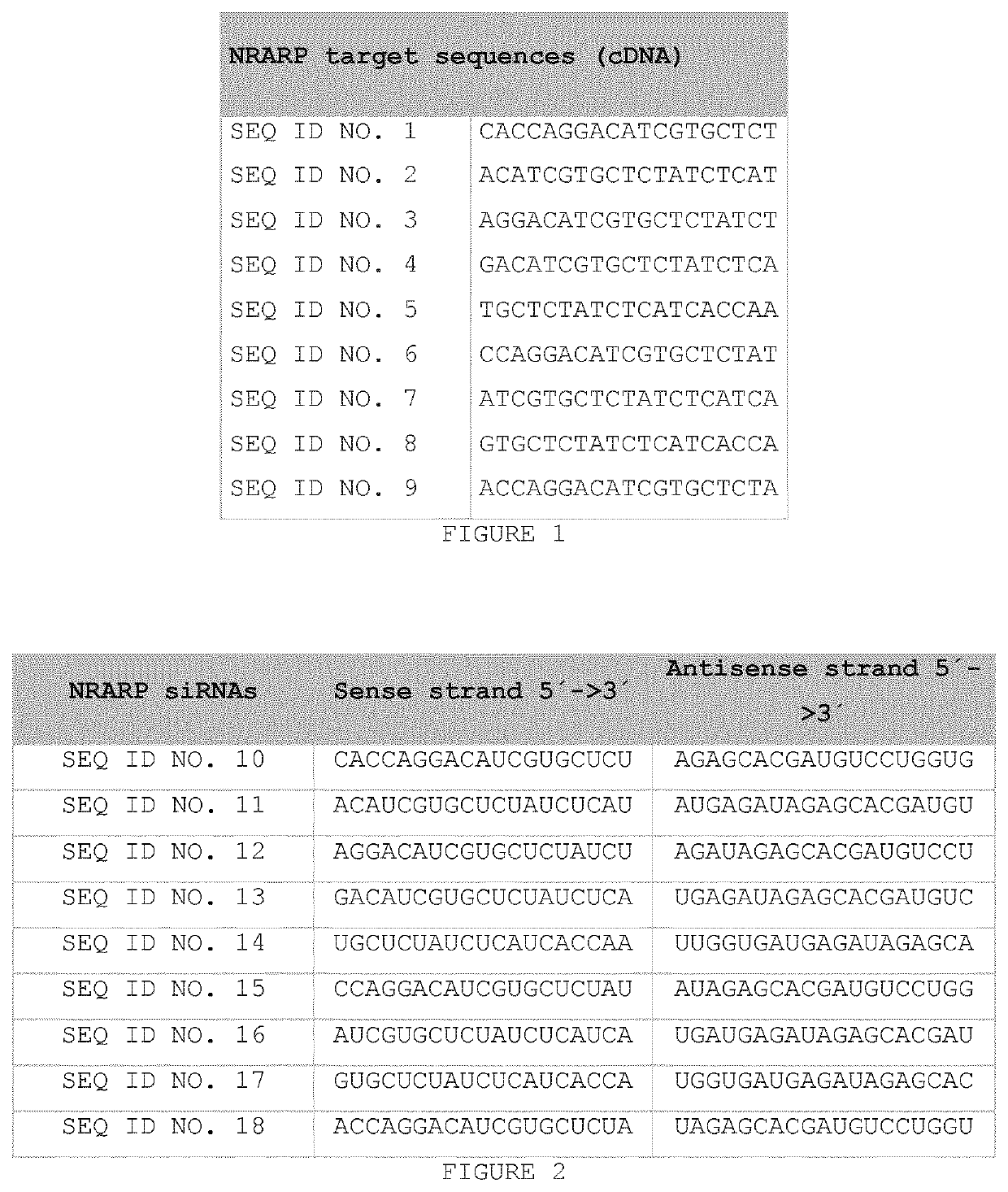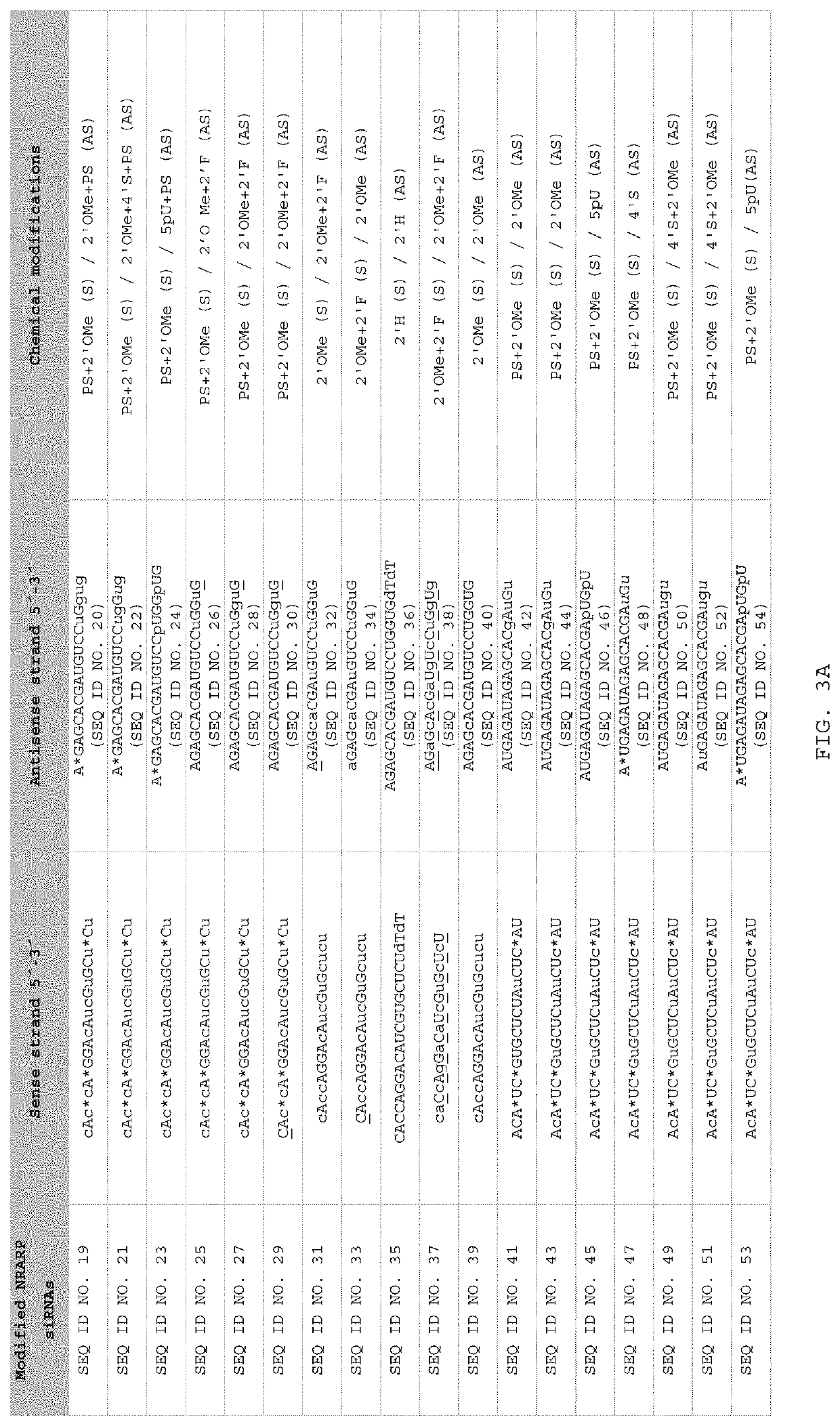siRNA and their use in methods and compositions for inhibiting the expression of the NRARP gene
a technology of nrarp and sirna, which is applied in the field of sirna products, can solve the problems of high associated cost, high risk of endophthalmitis, cataract formation and retinal detachment, and patient discomfort, and achieves the effects of reducing side effects, increasing potency, and reducing patient discomfor
- Summary
- Abstract
- Description
- Claims
- Application Information
AI Technical Summary
Benefits of technology
Problems solved by technology
Method used
Image
Examples
examples
[0132]1. In Vitro Analysis
[0133]1.1. Gene Expression Levels of NRARP After Transfection of SEQ ID NO. 10, SEQ ID NO.11 SEQ ID NO. 12 and SEQ ID NO. 13.
[0134]Human HeLa cells were transfected with 100 nM of one of 19 bp blunt ended dsRNA consisting of a sense strand consisting of one of the following sequences SEQ ID NO. 10 (SYL136001), SEQ ID NO. (SYL136005), SEQ ID NO. 12 (SYL136003), and SEQ ID NO. 13 (SYL136004), together with the complementary antisense strand, with Lipofectamine 2000 as transfecting agent. The SYL reference after each SEQ ID NO. refers to a reference for the dsRNA compound. Note that throughout these examples (unless the context makes otherwise clear), where administration or transfection of a particular SEQ ID NO is referred to, this indicates that 19 bp dsRNA was administered or transfected consisting of a sense strand consisting of the SEQ ID NO, and the complementary antisense strand as indicated in FIGS. 2 and 3. All transfections were performed following ...
PUM
| Property | Measurement | Unit |
|---|---|---|
| time | aaaaa | aaaaa |
| time | aaaaa | aaaaa |
| time | aaaaa | aaaaa |
Abstract
Description
Claims
Application Information
 Login to view more
Login to view more - R&D Engineer
- R&D Manager
- IP Professional
- Industry Leading Data Capabilities
- Powerful AI technology
- Patent DNA Extraction
Browse by: Latest US Patents, China's latest patents, Technical Efficacy Thesaurus, Application Domain, Technology Topic.
© 2024 PatSnap. All rights reserved.Legal|Privacy policy|Modern Slavery Act Transparency Statement|Sitemap



